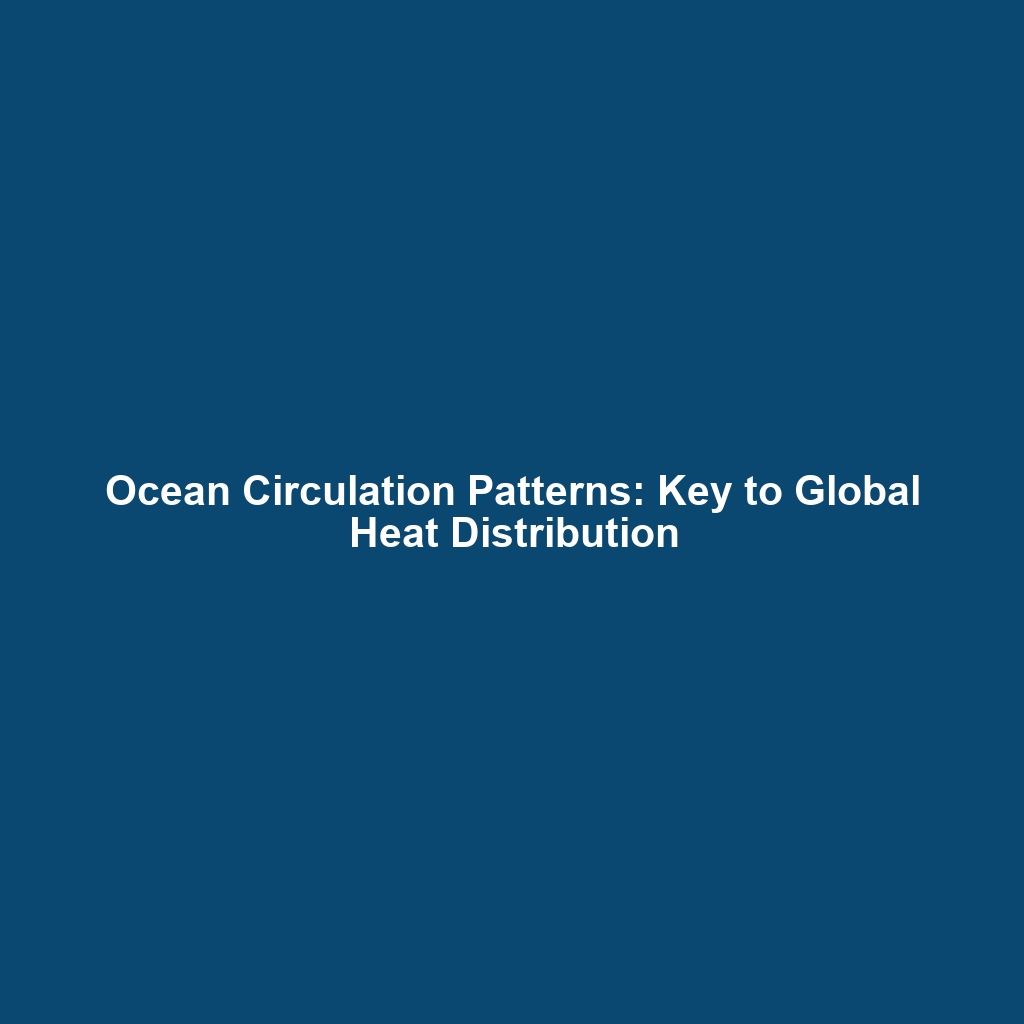Ocean Circulation Patterns and Their Impact on Global Heat Distribution
Introduction
Ocean circulation patterns play a vital role in regulating the Earth’s climate and distributing heat across the globe. These complex systems, driven by wind, temperature, and salinity differences, determine the distribution of warm and cold water masses. Understanding these patterns is essential not only for climate scientists but also for grasping the broader scope of Climate History. As we explore ocean currents, their dynamics influence weather systems, marine ecosystems, and global climate patterns, making them a significant factor in historical climate changes.
Key Concepts
The study of ocean circulation is multifaceted, encompassing several key concepts that are crucial for understanding their impact on global heat distribution:
- Thermohaline Circulation: This large-scale ocean circulation is driven by density differences due to temperature and salinity variations. It plays a crucial role in redistributing heat from the equator to the poles.
- Surface Currents: Winds drive surface currents, which influence climate patterns and marine life. The Gulf Stream, for example, significantly affects the temperatures along the Atlantic coast of North America.
- Climate Feedback Mechanisms: Changes in ocean circulation can lead to feedback effects that further alter climate systems, emphasizing the interconnectedness of ocean dynamics and climate history.
Applications and Real-World Uses
The implications of understanding ocean circulation patterns extend beyond theory into practical applications, particularly in climate history:
- Climate Modeling: Accurate oceanic data enhances climate models, allowing scientists to predict future changes and potential impacts on ecosystems and human societies.
- Natural Disaster Preparedness: Knowledge of ocean currents assists in predicting weather events such as El Niño or La Niña, which can lead to extreme weather across the globe.
- Marine Conservation: Understanding how currents influence nutrient distribution aids in creating effective conservation strategies for marine biodiversity.
Current Challenges
Despite advancements in research, several challenges remain in studying ocean circulation patterns, particularly in the context of Climate History:
- Data Limitations: Incomplete or sparse oceanographic data creates significant gaps in understanding historical circulation patterns.
- Model Complexity: The intricate dynamics of ocean currents make predictive modeling extremely complex and demanding.
- Climate Change: Rapid climate change can disrupt established circulation patterns, leading to unpredictable consequences, complicating historical comparisons.
Future Research and Innovations
Future research is poised to evolve significantly, focusing on innovative technologies and methodologies:
- Remote Sensing: Advances in satellite technology will allow for improved monitoring of ocean circulation and its global impacts.
- Ocean-Climate Interaction Studies: Integrative research approaches will enhance our understanding of the relationship between ocean currents and climate systems.
- Artificial Intelligence: AI technologies will enable better predictions of oceanographic trends by analyzing vast datasets more effectively.
Conclusion
In summary, ocean circulation patterns are a cornerstone of understanding global heat distribution and play a critical role in climate history. The ongoing research and findings in this field not only illuminate our past but also shape future climate resilience strategies. For more insights, consider exploring related topics such as thermohaline circulation and climate models that reinforce our understanding of these vital systems.
